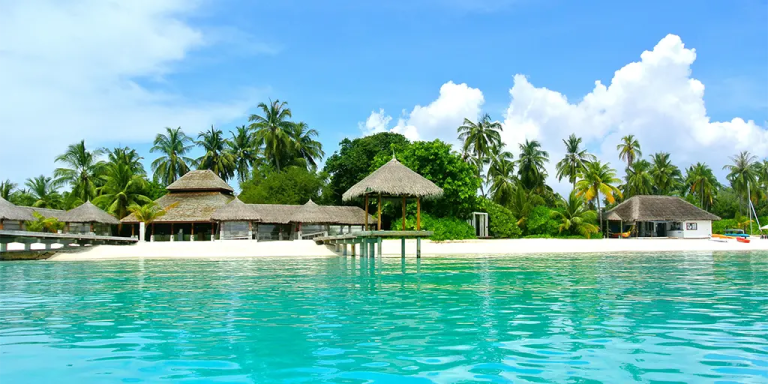Vijay Jayaraj
For decades we have been told that the island nation is on the verge of disappearing beneath the waves, its inhabitants doomed to fall victim to the catastrophic effects of climate change. Development activities in some of these countries, however, tell a different story.
In recent years, the Maldives has embarked on an ambitious plan to develop more than a dozen new airports, a move that appears to defy dire predictions about the country's future.
This contrast between apocalyptic narratives and seemingly optimistic realities raises important questions about the accuracy of doomsayers' predictions and the actual nature of the island's topography (the rise and fall of land features).
Maldives' infrastructure boom masks misplaced concerns
The Maldives, an archipelago of 1,192 coral islands divided into 26 atolls, has been investing heavily in its aviation infrastructure. Hanimadhoo International Airport is one of the country's 18 airports, and part of its recent upgrade includes a terminal with a capacity of 1.3 million passengers.
Velana International Airport is undergoing another major renovation. The new expansion will meet growing demand from tourism and trade. It is expected to accommodate 25 million passengers per year, almost six times the number of passengers in 2022.
The new cargo terminal in Velana is expected to handle 100,000 tons of cargo by 2025 and 300,000 tons by 2050. storage capacity.
This year, Maldivian President Dr. Mohamed Muizou announced a decree to build more airports on nine different islands. The decree also marks the development of a second airport in Laamu Atoll and the development of new airports at GA Villingili and GDh Thinadhoo.
In total, forecasts indicate that in addition to the existing 18 airports, 12 new airports will become operational within the next 10 years. These investments represent a significant commitment to long-term infrastructure development.
They also require major transformation of the islands, including land reclamation and coastal engineering. If the Maldivian leadership truly believed the country was on the verge of flooding, these plans would be difficult to justify.
Expansion and Subsidence: Island Science
The United Nations Intergovernmental Panel on Climate Change (IPCC) has long believed that small island countries face high risks from sea level rise. The IPCC reports are considered the bible for national policymakers around the world.
However, the reality on the ground and in the water is more complex than these dire predictions suggest. Islands, especially coral atolls like the Maldives, are dynamic systems that respond to environmental changes in complex ways.
They are not static land masses but constantly change shape and size as waves, currents and sediment are deposited. This dynamic nature means islands can grow under certain circumstances.
A scientific study published in 2020 examined shoreline changes caused by reclamation and coastal development on 607 islands in 23 atolls in the Maldives. They found that between 2004-2006 and 2014-2016, 59% of the islands remained stable, 24% expanded, and just under 17% contracted.
Likewise, there is a natural increase in land area. A landmark study published in the journal Nature Communications in 2018 examined changes over 40 years on 101 islands in the Pacific atoll nation of Tuvalu. Despite rising sea levels, the islands' total land area has increased by nearly 3%. Looking at individual islands, 74% have expanded, while only 14% have shrunk.
Between 1958 and 2014, sea levels rose 1.5 millimeters per year, which is far from dangerous. This is minuscule compared with the 47 mm per year rise that occurred 8,200 years ago.
During the Medieval Warm Period 1,000 years ago, global sea levels were higher than today, but life still flourished.
The Maldives' huge investments in infrastructure and scientific evidence of the island's topography suggest the only thing that's sunk are alarmist stories about the country disappearing due to climate change.
This review was first published on resurrection September 6, 2024.
Vijay Jayaraj is a research and scientific assistant CO2 AllianceArlington, Virginia. he He holds a master's degree in environmental science from the University of East Anglia and a postgraduate degree in energy management from Robert Gordon University in the UK, as well as a bachelor's degree in engineering from Anna University in India.
Relevant
